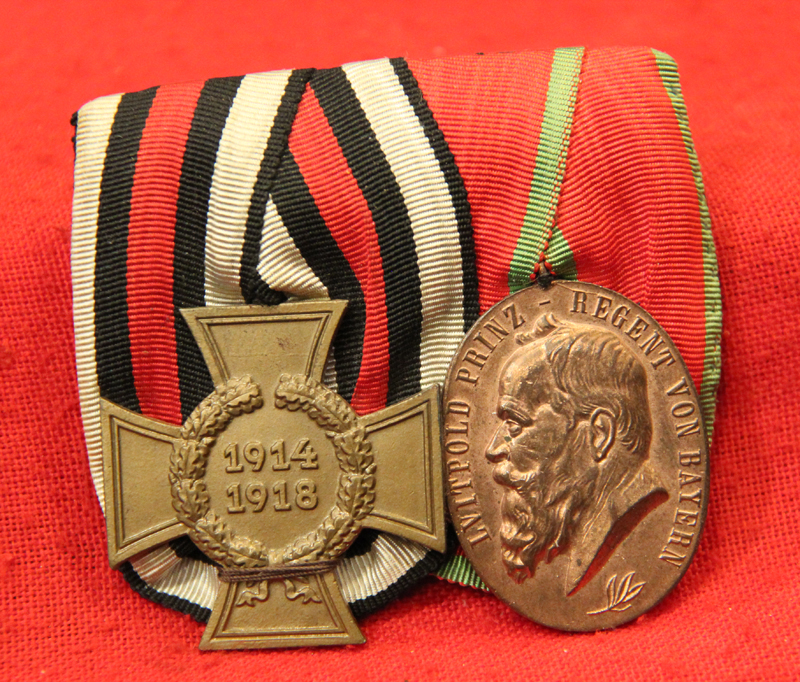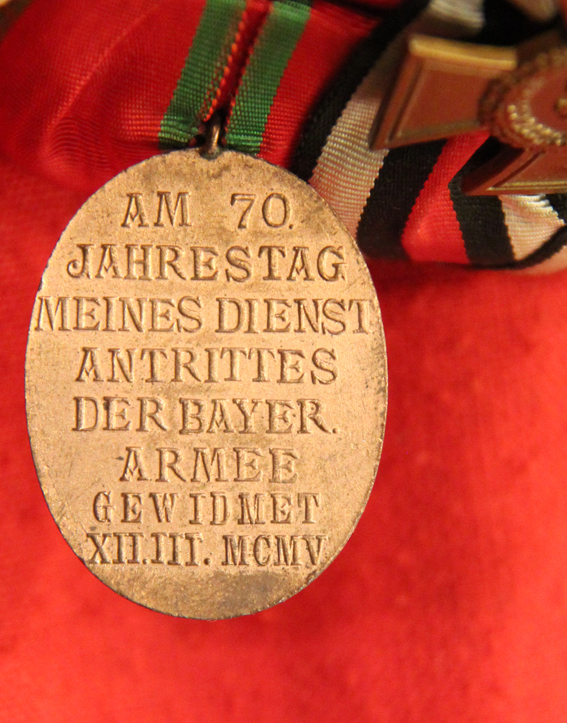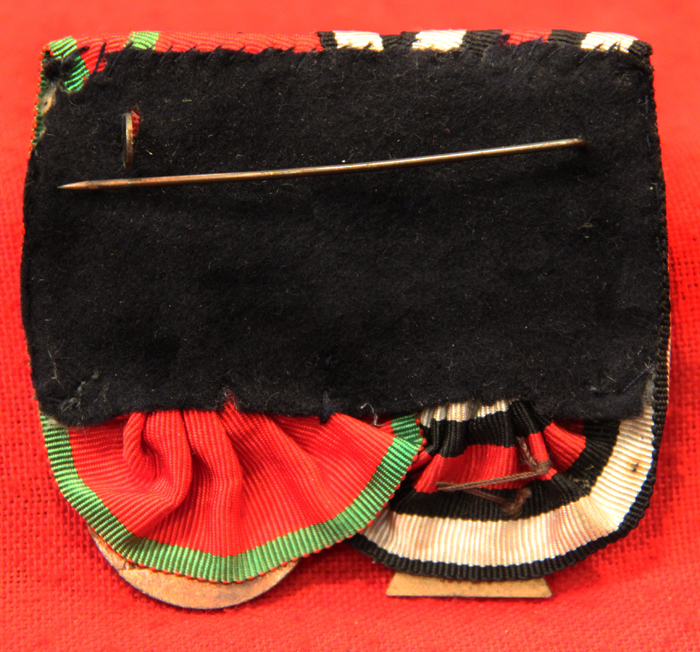A Scarce Kingdom of Bavaria WW1 Medal Pair. A 1905 Bavarian Prinz Luitpold Pair With WW1 Honour {Hindenberg} Cross. The Honour Cross For WW1 Qualifying Veterans Throughout Imperial Germany & The German Kingdoms, Principalities, and Duchys
Rare Kingdom of Bavaria WW1 medal group. By an Armeebefehl dated 12. Marz 1905, Luitpold, Prinz von Bayern, regent of Bavaria, announced the creation of the Jubilee Medal (Jubilumsmedaille) for the Bavarian Army.
The event was the 70th anniversary of Luitpold's entering the army. This medal of merit is a bronze medal, oval in form. It is worn on a watered ribbon in the colours of the House and Knightly Order of St. Hubertus (cinnabar red with light green edges/zinnoberrot mit hellgrunen Randstreifen).
The obverse has a bust of Luitpold and the inscription "LUITPOLD PRINZ-REGENT VON BAYERN". The reverse has the inscription: "AM 70. JAHRESTAG MEINES DIENST-ANTRITTES DER BAYER. ARMEE GEWIDMET XII. III. MCMV."
Only 22,003 were ever awarded.
The only WW1 medal Adolf Hitler approved to be worn by WW1 recipients in their service in WW2. The Honour Cross of the World War 1914/1918 (German: Das Ehrenkreuz des Weltkriegs 1914/1918), commonly, but incorrectly, known as the Hindenburg Cross was established by Field Marshal Paul von Hindenburg, President of the German Republic, by an order dated 13 July 1934, to commemorate the distinguished deeds of the German people during the First World War. This was Germany's first official service medal for soldiers of Imperial Germany who had taken part in the war, and where they had since died it was also awarded to their surviving next-of-kin. Shortly after its issuance, the government of Nazi Germany declared the award as the only official service decoration of the First World War and further forbid the continued wearing of German Free Corps awards on any military or paramilitary uniform of a state or Nazi Party organization. The Honour Cross was modelled on the reverse side of the War Commemorative Medal of 1870/71 (Preußen Kriegsdenkmünze 1870-1871). The form of it awarded to combatants (the Frontkämpferkreuz) shows a laurel wreath encircling a medallion, with the dates "1914 1918". Crossed swords are between the arms, while the Honour Cross for non-combatants has no swords and has instead a wreath of oak leaves. Both crosses are in bronze. The Honour Cross for Next-of-Kin (commonly known as the Widows Cross), is black. The Honour Cross is worn suspended from a ribbon with black edges, two white stripes, and a red stripe between them. The ribbon for the Honour Cross for Next-of-Kin has these colours in a different order, having a white edge, with two black stripes on either side of a red stripe. They were frequently worn with the ribbon fashioned into a bow, with a pin on the back, which the mother or widow in question attached to her clothing. The application for this award had a time limit, which expired at the end of 1942.
Code: 21990
190.00 GBP



